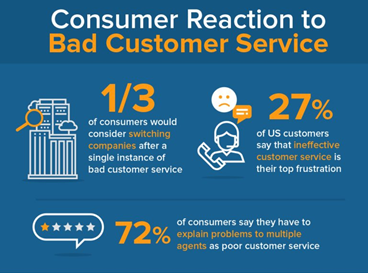The world is returning to normal, shops are open and we’re about to launch into what promises to be a very busy holiday season.
As businesses return to pre-pandemic output, many will struggle to keep up with the increased demands on their technology. Can your business afford to miss out on revenue because of a tech failure?
In December 2020, for example, Amazon and eBay went offline for one hour, resulting in an estimated $4.2 million loss in sales – in just one hour!
This is why customer experience testing plays a critical roll in eCommerce retailing. The bottom line is – if you don’t test, you stand to lose customers, dollars and valuable brand equity.
Customers are tough cookies
Surveys show that a whopping 63% of U.S. customers will switch brands due to poor customer service, and a third would go elsewhere after just one bad interaction.
Conversely though, 86% of customers are willing to spend more to have a great customer experience – and 93% are more likely to make a repeat purchase with businesses who offer that great experience.

Image Source: Finances online
Customer expectation vs customer experience
So now we know that customers expect nothing but the best service and a seamless, hassle-free experience every time. The way to give them what they want is to use testing solutions that enable you to identify gaps between how you think your systems are performing – and how they actually are.
In your contact center, the majority of connections between customers and your brand are through technology. So how do you know for sure if all your technology across multiple channels, including voice, video, web, chat, email and mobile apps are delivering the experience your customers expect? The answer is to test it as though you were a customer using it – from the outside in.
For your enterprise communications and collaboration environment, testing is just as important. Active testing will ensure that key components like audio and video conferencing tools, conference bridges, menu trees are all available and performing as they should. Poor quality audio, choppy video, or a dealing with a dodgy connection can derail important meetings. This directly impacts user experience and can damage your reputation with clients.
Testing gives you the real time insights you need to deliver a level of service that exceeds customer expectations.
Want to know more? Read our ‘Definitive Guide to Performance Testing' here.
What exactly is performance testing?
In a nutshell, performance testing refers to the measurement and evaluation of how your systems and components are functioning. Important elements to test for include reliability, scalability, efficiency, interoperability and stability under loads.
At IR, our testing solutions are designed to show you where your system is likely to fall down, before it happens.
Could you imagine your website or IVR crashing after an influx of visitors just before Thanksgiving or Christmas sales?
Or what if your call center becomes inundated with calls, and your customers are transferred to dead-ends or continuous loops?
IR Collaborate managed testing solutions can proactively test the components in your unified communications and contact center environments to make sure they can handle peak loads and unexpected stress.
What sort of testing should I be doing?
Active testing saves companies millions of dollars. According to a report by Dun & Bradstreet, 59% of Fortune 500 companies will experience on average,1.6 hours of downtime each week. So if you do the math, a Fortune 500 company employing 52,810 people at a minimum of $10 an hour, would be out of pocket $528,100 a week in lost productivity, or $27,461,200 a year. Still need to be convinced about performance testing?
Our comprehensive guide covers the types of testing you should be doing in detail, but briefly, the two main types are:
Stress testing checks the upper limits of your system by testing it under extreme loads, and also how well it recovers when going back to normal usage. It checks that KPIs like throughput and response time are the same as before a spike in load. Stress testing tools also look for memory leaks, slowdowns, security issues, and data corruption.
A load test ensures that a network system can handle an expected volume of traffic, or load limit. In other words, it tests how a system behaves when bombarded with specific levels of simultaneous requests. Load testing is sometimes referred to as volume testing, and proves that the system under test can handle its load limit, with minimal to acceptable performance degradation. Before carrying out a load test, the threshold of acceptable performance degradation needs to be pre-defined by the testers.
Performance management vs active testing
With IR Collaborate, you’re completely covered from the outside-in and the inside-out when it comes to exceeding customer expectations and delivering excellent user experience.
Whether talking about a contact center environment or UCC for enterprise communications, the difference between active testing, and comprehensive performance management is:
- Active testing automatically and proactively tests your technology from the outside to see if it’s working, and alerts you when it’s not.
- Performance management reactively tells you from the inside what happened when somebody tried to use something – and it didn’t work as intended. It then delivers a raft of data about what happened to cause the problem that wasn’t evident from the outside.
Nobody can afford to take a hit in sales this holiday season, so don’t rest till you test, and save yourself a whole lot of stress!





